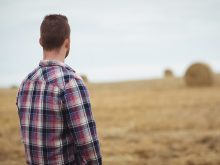University of Alberta researchers will focus on producers’ specific needs of care and look for the best ways to access it
A new University of Alberta study aims to build understanding of the stresses that agricultural producers face when it comes to mental health.
Rebecca Purc-Stephenson, a psychology professor at U of A, said the release of a recent national study revealed producers are experiencing rates of depression, anxiety and chronic stress well above the national average.
“Those results were very surprising and a follow-up study that (the University of Guelph) did showed that one in four Canadian farmers felt that their life was not worth living, wished they were dead and thought of taking their own life in the last 12 months,” she said. “We really want to address this, improve mental health resources for this demographic.”
Read Also

Manitoba community projects get support from HyLife
HyLife Fun Days 2025 donated $35,000 each to recreation and housing projects in Killarney, Steinach and Neepawa earlier this fall.
Both the financial and weather environments have been changing and increasing the challenges faced by the agricultural sector, adding to the stressors felt by farmers and ranchers, something that Purc-Stephenson said is equating to a real need to address the situation.
Part of the problem might lie in the cultural identity of producers, which is based on self-reliance and pushing through challenges.
“But that really doesn’t help anyone when they are facing this amount of stressors. They don’t seek out support, they might not reach out for help,” said Purc-Stephenson. “Our goal with our research program is to shift the culture of farming so that mental health is something that is considered just as you would consider maintenance on any piece of equipment you would use.”
The nature of farming in smaller, rural settings can be an asset in that there is a ready and able network willing to support fellow producers, but it can also exacerbate the stigma surrounding mental health challenges.
“If you start spraying your crop earlier, you’re probably going to get some phone calls asking why you are doing this,” said Purc-Stephenson. “Everybody knows everybody’s business. It’s a double-edged sword.”
Those issues are compounded when the rising age of the average farmer is factored in, along with the physical limitations an aging body faces when carrying out the day-to-day requirements of keeping an agricultural operation going.
“If you are aging and you don’t have those supports anymore, you’re not able to move as much. Farmers have said in the research they just feel useless,” said Purc-Stephenson.
The research shows the most at risk for suicide in the farmer populations are white men between the ages of 35 and 64 with medium-sized operations with less than 11 employees who are both socially and geographically isolated.
Purc-Stephenson said when it comes to suicide among producers, “they often have the means to do it. Either a gun or they have chemicals to do that.”
Collecting data on farmer suicides can be difficult because it can sometimes be put down as accidental or categorized as something else than what it is, she added.
“All we know is that individuals who face ongoing stressors without having supports to lift them back up and build resilience, they are on the path of a downward spiral that can lead to poorer mental health,” said Purc-Stephenson.
She said the U of A study plans to start in the new year and focus on Alberta farmers, looking at their specific needs of care and the best ways to access it, as well as the stressors surrounding family farm transitions and animal depopulation events.
“Our goal is to look at what are the issues Alberta farmers are facing now, what are the supports we can put in place to help them,” said Purc-Stephenson.
It is important to ensure mental health professionals have a background in agriculture, she added.
More information on mental health resources for agricultural producers in Alberta can be found on the AgKnow website at www.agknow.ca.
















